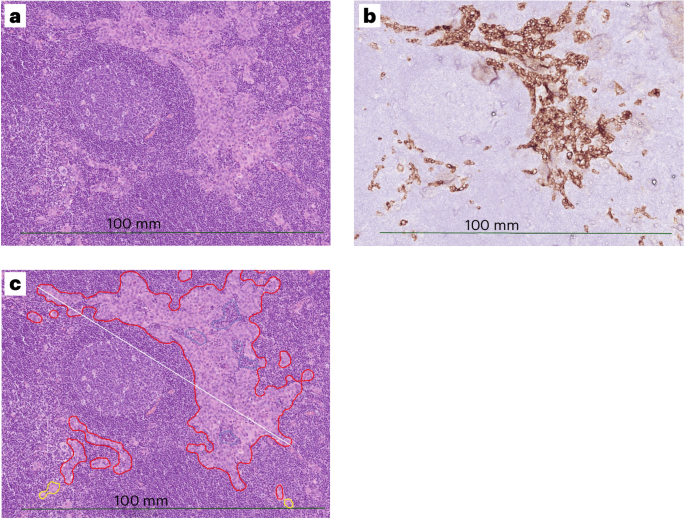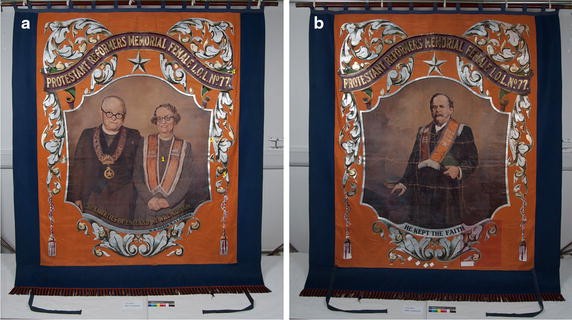
- Select a language for the TTS:
- UK English Female
- UK English Male
- US English Female
- US English Male
- Australian Female
- Australian Male
- Language selected: (auto detect) - EN
Play all audios:
ABSTRACT The central dogma of molecular biology — DNA makes RNA makes proteins — is a flow of information that in eukaryotes encounters a physical barrier: the nuclear envelope, which
encapsulates, organizes and protects the genome. Nuclear-pore complexes, embedded in the nuclear envelope, regulate the passage of molecules to and from the nucleus, including the poorly
understood process of the export of RNAs from the nucleus. Recent imaging approaches focusing on single molecules have provided unexpected insight into this crucial step in the information
flow. This review addresses the latest studies of RNA export and presents some models for how this complex process may work. Access through your institution Buy or subscribe This is a
preview of subscription content, access via your institution ACCESS OPTIONS Access through your institution Subscribe to this journal Receive 51 print issues and online access $199.00 per
year only $3.90 per issue Learn more Buy this article * Purchase on SpringerLink * Instant access to full article PDF Buy now Prices may be subject to local taxes which are calculated during
checkout ADDITIONAL ACCESS OPTIONS: * Log in * Learn about institutional subscriptions * Read our FAQs * Contact customer support SIMILAR CONTENT BEING VIEWED BY OTHERS OVERLAPPING NUCLEAR
IMPORT AND EXPORT PATHS UNVEILED BY TWO-COLOUR MINFLUX Article Open access 19 March 2025 SUPER-RESOLVED 3D TRACKING OF CARGO TRANSPORT THROUGH NUCLEAR PORE COMPLEXES Article 10 January 2022
THE CELLULAR ENVIRONMENT SHAPES THE NUCLEAR PORE COMPLEX ARCHITECTURE Article Open access 13 October 2021 REFERENCES * Franke, W. W. & Scheer, U. The ultrastructure of the nuclear
envelope of amphibian oocytes: a reinvestigation _J. Ultrastruct. Res._ 30, 288–316 (1970). CAS PubMed Google Scholar * Walde, S. & Kehlenbach, R. H. The Part and the Whole: functions
of nucleoporins in nucleocytoplasmic transport. _Trends Cell Biol._ 20, 461–469 (2010). PubMed Google Scholar * Mattaj, I. W. & Englmeier, L. Nucleocytoplasmic transport: the soluble
phase. _Annu. Rev. Biochem._ 67, 265–306 (1998). CAS PubMed Google Scholar * Pemberton, L. F. & Paschal, B. M. Mechanisms of receptor-mediated nuclear import and nuclear export.
_Traffic_ 6, 187–198 (2005). CAS PubMed Google Scholar * Alber, F. et al. The molecular architecture of the nuclear pore complex. _Nature_ 450, 695–701 (2007). THIS STUDY DESCRIBES AN
APPROACH TO COMBINE DIFFERENT EXPERIMENTAL DATA INTO A COMMON FRAMEWORK WITH A DEFINED ERROR, UNDERLINING THE ESSENTIAL FEATURES OF NPC ARCHITECTURE. ADS CAS PubMed Google Scholar *
Strawn, L. A., Shen, T. X., Shulga, N., Goldfarb, D. S. & Wente, S. R. Minimal nuclear pore complexes define FG repeat domains essential for transport. _Nature Cell Biol._ 6, 197–206
(2004). CAS PubMed Google Scholar * Jovanovic-Talisman, T. et al. Artificial nanopores that mimic the transport selectivity of the nuclear pore complex. _Nature_ 457, 1023–1027 (2009).
ADS CAS PubMed Google Scholar * Ris, H. & Malecki, M. High-resolution field emission scanning electron microscope imaging of internal cell structures after Epon extraction from
sections: a new approach to correlative ultrastructural and immunocytochemical studies. _J. Struct. Biol._ 111, 148–157 (1993). CAS PubMed Google Scholar * Kiseleva, E. et al. Yeast
nuclear pore complexes have a cytoplasmic ring and internal filaments. _J. Struct. Biol._ 145, 272–288 (2004). CAS PubMed Google Scholar * Kubitscheck, U. et al. Nuclear transport of
single molecules: dwell times at the nuclear pore complex. _J. Cell Biol._ 168, 233–243 (2005). PubMed PubMed Central Google Scholar * Grünwald, D. & Singer, R. _In vivo_ imaging of
labelled endogenous β-actin mRNA during nucleocytoplasmic transport. _Nature_ 467, 604–607 (2010). THIS IS THE FIRST STUDY TO FOLLOW A SINGLE MRNA IN DETAIL THROUGH THE NPC, SHOWING THAT
OVERALL TRANSPORT TIMES ARE FAST, ∼HUNDREDS OF MILLISECONDS, AND THAT DOCKING AND RELEASE ARE VISIBLE KINETIC STEPS. ADS PubMed PubMed Central Google Scholar * Gorlich, D. & Kutay,
U. Transport between the cell nucleus and the cytoplasm. _Annu. Rev. Cell Dev. Biol._ 15, 607–660 (1999). CAS PubMed Google Scholar * Paine, P. L., Moore, L. C. & Horowitz, S. B.
Nuclear envelope permeability. _Nature_ 254, 109–114 (1975). ADS CAS PubMed Google Scholar * Keminer, O. & Peters, R. Permeability of single nuclear pores. _Biophys. J._ 77, 217–228
(1999). ADS CAS PubMed PubMed Central Google Scholar * Mohr, D., Frey, S., Fischer, T., Guttler, T. & Gorlich, D. Characterisation of the passive permeability barrier of nuclear
pore complexes. _EMBO J._ 28, 2541–2553 (2009). CAS PubMed PubMed Central Google Scholar * Macara, I. G. Transport into and out of the nucleus. _Microbiol. Mol. Biol. Rev._ 65, 570–594
(2001). CAS PubMed PubMed Central Google Scholar * Wente, S. R. & Rout, M. P. The nuclear pore complex and nuclear transport. _Cold Spring Harb. Perspect. Biol._ 2, a000562 (2010).
CAS PubMed PubMed Central Google Scholar * Timney, B. L. et al. Simple kinetic relationships and nonspecific competition govern nuclear import rates _in vivo_ . _J. Cell Biol._ 175,
579–593 (2006). CAS PubMed PubMed Central Google Scholar * Dange, T., Grünwald, D., Grünwald, A., Peters, R. & Kubitscheck, U. Autonomy and robustness of translocation through the
nuclear pore complex: a single-molecule study. _J. Cell Biol._ 183, 77–86 (2008). CAS PubMed PubMed Central Google Scholar * Nachury, M. V. & Weis, K. The direction of transport
through the nuclear pore can be inverted. _Proc. Natl Acad. Sci. USA_ 96, 9622–9627 (1999). ADS CAS PubMed PubMed Central Google Scholar * Kopito, R. B. & Elbaum, M. Reversibility
in nucleocytoplasmic transport. _Proc. Natl Acad. Sci. USA_ 104, 12743–12748 (2007). ADS CAS PubMed PubMed Central Google Scholar * Terry, L. J. & Wente, S. R. Flexible gates:
dynamic topologies and functions for FG nucleoporins in nucleocytoplasmic transport. _Eukaryot. Cell_ 8, 1814–1827 (2009). CAS PubMed PubMed Central Google Scholar * Denning, D. P.,
Patel, S. S., Uversky, V., Fink, A. L. & Rexach, M. Disorder in the nuclear pore complex: the FG repeat regions of nucleoporins are natively unfolded. _Proc. Natl Acad. Sci. USA_ 100,
2450–2455 (2003). ADS CAS PubMed PubMed Central Google Scholar * Lim, R. Y. et al. Nanomechanical basis of selective gating by the nuclear pore complex. _Science_ 318, 640–643 (2007).
ADS CAS PubMed Google Scholar * Frey, S., Richter, R. P. & Gorlich, D. FG-rich repeats of nuclear pore proteins form a three-dimensional meshwork with hydrogel-like properties.
_Science_ 314, 815–817 (2006). ADS CAS PubMed Google Scholar * Frey, S. & Gorlich, D. A saturated FG-repeat hydrogel can reproduce the permeability properties of nuclear pore
complexes. _Cell_ 130, 512–523 (2007). CAS PubMed Google Scholar * Eisele, N. B., Frey, S., Piehler, J., Gorlich, D. & Richter, R. P. Ultrathin nucleoporin phenylalanine–glycine
repeat films and their interaction with nuclear transport receptors. _EMBO Rep._ 11, 366–372 (2010). CAS PubMed PubMed Central Google Scholar * Rout, M. P. et al. The yeast nuclear pore
complex: composition, architecture, and transport mechanism. _J. Cell Biol._ 148, 635–651 (2000). CAS PubMed PubMed Central Google Scholar * Rout, M. P., Aitchison, J. D., Magnasco, M.
O. & Chait, B. T. Virtual gating and nuclear transport: the hole picture. _Trends Cell Biol._ 13, 622–628 (2003). CAS PubMed Google Scholar * Peters, R. The nanopore connection to
cell membrane unitary permeability. _Traffic_ 6, 199–204 (2005). CAS PubMed Google Scholar * Yamada, J. et al. A bimodal distribution of two distinct categories of intrinsically
disordered structures with separate functions in FG nucleoporins. _Mol. Cell. Proteomics_ 9, 2205–2224 (2010). CAS PubMed PubMed Central Google Scholar * Lim, R. Y. et al. Flexible
phenylalanine-glycine nucleoporins as entropic barriers to nucleocytoplasmic transport. _Proc. Natl Acad. Sci. USA_ 103, 9512–9517 (2006). ADS CAS PubMed PubMed Central Google Scholar *
Zilman, A., Di Talia, S., Chait, B. T., Rout, M. P. & Magnasco, M. O. Efficiency, selectivity, and robustness of nucleocytoplasmic transport. _PLoS Comput. Biol._ 3, e125 (2007). ADS
PubMed PubMed Central Google Scholar * Zilman, A. et al. Enhancement of transport selectivity through nano-channels by non-specific competition. _PLoS Comput. Biol._ 6, e1000804 (2010).
MathSciNet PubMed PubMed Central Google Scholar * Huve, J., Wesselmann, R., Kahms, M. & Peters, R. 4Pi microscopy of the nuclear pore complex. _Biophys. J._ 95, 877–885 (2008).
PubMed PubMed Central Google Scholar * Kahms, M., Lehrich, P., Huve, J., Sanetra, N. & Peters, R. Binding site distribution of nuclear transport receptors and transport complexes in
single nuclear pore complexes. _Traffic_ 10, 1228–1242 (2009). CAS PubMed Google Scholar * Ma, J. & Yang, W. Three-dimensional distribution of transient interactions in the nuclear
pore complex obtained from single-molecule snapshots. _Proc. Natl Acad. Sci. USA_ 107, 7305–7310 (2010). IN THIS STUDY, VERY HIGH SPATIAL RESOLUTION IS ACHIEVED BY A COMBINATION OF CONFOCAL
EXCITATION WITH CAMERA DETECTION AND MODELLING OF DATA, SUPPORTING THE EXISTENCE OF DEFINED CARGO TRANSPORT ROUTES WITHIN THE NPC. ADS CAS PubMed PubMed Central Google Scholar * Kopito,
R. B. & Elbaum, M. Nucleocytoplasmic transport: a thermodynamic mechanism. _HFSP J._ 3, 130–141 (2009). CAS PubMed PubMed Central Google Scholar * Yang, W., Gelles, J. & Musser,
S. M. Imaging of single-molecule translocation through nuclear pore complexes. _Proc. Natl Acad. Sci. USA_ 101, 12887–12892 (2004). ADS CAS PubMed PubMed Central Google Scholar * Mor,
A. et al. Dynamics of single mRNP nucleocytoplasmic transport and export through the nuclear pore in living cells. _Nature Cell Biol._ 12, 543–552 (2010). IN THIS PAPER, VARIOUS LARGE
EXOGENOUS MRNP CARGOS ARE FOLLOWED _IN VIVO_ , AND THEIR PROGRESS FROM THE TRANSCRIPTION SITE TO THE NPC IS SHOWN TO BE SLOW (MINUTES), WHEREAS NUCLEAR TRANSPORT IS MORE RAPID (SECONDS). CAS
PubMed Google Scholar * Feldherr, C. M., Kallenbach, E. & Schultz, N. Movement of a karyophilic protein through the nuclear pores of oocytes. _J. Cell Biol._ 99, 2216–2222 (1984).
CAS PubMed Google Scholar * Dworetzky, S. I. & Feldherr, C. M. Translocation of RNA-coated gold particles through the nuclear pores of oocytes. _J. Cell Biol._ 106, 575–584 (1988).
CAS PubMed Google Scholar * Richardson, W. D., Mills, A. D., Dilworth, S. M., Laskey, R. A. & Dingwall, C. Nuclear protein migration involves two steps: rapid binding at the nuclear
envelope followed by slower translocation through nuclear pores. _Cell_ 52, 655–664 (1988). CAS PubMed Google Scholar * Yang, W. & Musser, S. M. Nuclear import time and transport
efficiency depend on importin β concentration. _J. Cell. Biol._ 174, 951–961 (2006). CAS PubMed PubMed Central Google Scholar * Ribbeck, K. & Gorlich, D. Kinetic analysis of
translocation through nuclear pore complexes. _EMBO J._ 20, 1320–1330 (2001). CAS PubMed PubMed Central Google Scholar * Tokunaga, M., Imamoto, N. & Sakata-Sogawa, K. Highly inclined
thin illumination enables clear single-molecule imaging in cells. _Nature Methods_ 5, 159–161 (2008). THIS STUDY INTRODUCES A CAREFUL CALIBRATION OF A SIMPLE LIGHT SHIELD TECHNIQUE FOR
FLUORESCENCE IMAGING, AND IS THE FIRST DIRECT VISUALIZATION OF THE HIGH OCCUPANCY OF NPCS WITH SEVERAL INDIVIDUAL TRANSPORT RECEPTORS _IN VIVO_. CAS PubMed Google Scholar * Ellis, R. J.
Protein folding — inside the cage. _Nature_ 442, 360–362 (2006). ADS CAS PubMed Google Scholar * Marenduzzo, D., Finan, K. & Cook, P. R. The depletion attraction: an underappreciated
force driving cellular organization. _J. Cell Biol._ 175, 681–686 (2006). CAS PubMed PubMed Central Google Scholar * Lowe, A. R. et al. Selectivity mechanism of the nuclear pore complex
characterized by single cargo tracking. _Nature_ 467, 600–603 (2010). THIS PAPER PRESENTS THE CONSTRAINTS ON LARGE CARGO TRANSPORT FOR ARTIFICIAL, NOT DEFORMABLE, CARGO, SHOWING THE LOWER
TIME LIMIT FOR NPC TRANSLOCATION AND THE UPPER LIMIT FOR CARGO DIAMETER. ADS CAS PubMed PubMed Central Google Scholar * Sun, C., Yang, W., Tu, L. C. & Musser, S. M. Single-molecule
measurements of importin α-cargo complex dissociation at the nuclear pore. _Proc. Natl Acad. Sci. USA_ 105, 8613–8618 (2008). ADS CAS PubMed PubMed Central Google Scholar * Fiserova,
J., Richards, S. A., Wente, S. R. & Goldberg, M. W. Facilitated transport and diffusion take distinct spatial routes through the nuclear pore complex. _J. Cell Sci._ 123, 2773–2780
(2010). REFERENCES 37 AND 51 USE ULTRASTRUCTURAL STUDIES AND SUPER-FAST FREEZING OF SAMPLES TO CAPTURE CARGO WITHIN THE NPC IN INTACT CELLS, DEMONSTRATING THAT CARGO CAN TRAVEL ALONG
SPECIFIC ROUTES IN THE NPC. CAS PubMed PubMed Central Google Scholar * Peters, R. Translocation through the nuclear pore complex: selectivity and speed by reduction-of-dimensionality.
_Traffic_ 6, 421–427 (2005). CAS PubMed Google Scholar * Dimitrov, D. I., Milchev, A. & Binder, K. Polymer brushes in cylindrical pores: simulation versus scaling theory. _J. Chem.
Phys._ 125, 34905 (2006). CAS PubMed Google Scholar * Mehlin, H., Daneholt, B. & Skoglund, U. Translocation of a specific premessenger ribonucleoprotein particle through the
nuclear-pore studied with electron-microscope tomography. _Cell_ 69, 605–613 (1992). CAS PubMed Google Scholar * Köhler, A. & Hurt, E. C. Exporting RNA from the nucleus to the
cytoplasm. _Nature Rev. Mol. Cell Biol._ 8, 761–773 (2007). Google Scholar * Akey, C. W. Visualization of transport-related configurations of the nuclear pore transporter. _Biophys. J._ 58,
341–355 (1990). ADS CAS PubMed PubMed Central Google Scholar * Iborra, F. J., Jackson, D. A. & Cook, P. R. The path of RNA through nuclear pores: apparent entry from the sides into
specialized pores. _J. Cell Sci._ 113, 291–302 (2000). CAS PubMed Google Scholar * Siebrasse, J. P. & Kubitscheck, U. Single molecule tracking for studying nucleocytoplasmic
transport and intranuclear dynamics. _Methods Mol. Biol._ 464, 343–361 (2009). PubMed Google Scholar * Galy, V. et al. Nuclear retention of unspliced mRNAs in yeast is mediated by
perinuclear Mlp1. _Cell_ 116, 63–73 (2004). CAS PubMed Google Scholar * Siebrasse, J. P. et al. Discontinuous movement of mRNP particles in nucleoplasmic regions devoid of chromatin.
_Proc. Natl Acad. Sci. USA_ 105, 20291–20296 (2008). THIS CAREFUL ANALYSIS OF RNP MOBILITY WITHIN THE NUCLEUS DEMONSTRATES THAT DIFFERENT MOBILITY DISTRIBUTIONS OBSERVED FOR AN RNP ARE BEST
EXPLAINED BY SINGLE MOLECULES ALTERNATING BETWEEN TETHERING AND DIFFUSION. ADS CAS PubMed PubMed Central Google Scholar * Kiseleva, E., Goldberg, M. W., Allen, T. D. & Akey, C. W.
Active nuclear pore complexes in _Chironomus_: visualization of transporter configurations related to mRNP export. _J. Cell Sci._ 111, 223–236 (1998). CAS PubMed Google Scholar * Soop, T.
et al. Nup153 affects entry of messenger and ribosomal ribonucleoproteins into the nuclear basket during export. _Mol. Biol. Cell_ 16, 5610–5620 (2005). CAS PubMed PubMed Central Google
Scholar * Dargemont, C. & Kuhn, L. C. Export of mRNA from microinjected nuclei of _Xenopus laevis_ oocytes. _J. Cell Biol._ 118, 1–9 (1992). CAS PubMed Google Scholar * Montpetit, B.
et al. A conserved mechanism of DEAD-box ATPase activation by nucleoporins and InsP6 in mRNA export. _Nature_ 472, 238–242 (2011). THIS STUDY PRESENTS THE ATOMIC STRUCTURES OF PROTEIN
COMPLEXES FOR MRNA AND FACTORS THAT HAVE BEEN IMPLICATED IN NPC-RELATED EXPORT, AND PROVIDES A MODEL FOR HOW THE RELEASE STEP OF LARGE CARGO FROM THE NPC IS ACHIEVED. ADS CAS PubMed
PubMed Central Google Scholar * Conti, E. & Izaurralde, E. Nucleocytoplasmic transport enters the atomic age. _Curr. Opin. Cell Biol._ 13, 310–319 (2001). CAS PubMed Google Scholar
* Reed, R. & Hurt, E. A conserved rnRNA export machinery coupled to pre-mRNA splicing. _Cell_ 108, 523–531 (2002). CAS PubMed Google Scholar * Kota, K. P., Wagner, S. R., Huerta, E.,
Underwood, J. M. & Nickerson, J. A. Binding of ATP to UAP56 is necessary for mRNA export. _J. Cell Sci._ 121, 1526–1537 (2008). CAS PubMed Google Scholar * Carmody, S. R. & Wente,
S. R. mRNA nuclear export at a glance. _J. Cell Sci._ 122, 1933–1937 (2009). CAS PubMed PubMed Central Google Scholar * Stewart, M. Ratcheting mRNA out of the nucleus. _Mol. Cell_ 25,
327–330 (2007). CAS PubMed Google Scholar * Rodriguez-Navarro, S. & Hurt, E. Linking gene regulation to mRNA production and export. _Curr. Opin. Cell Biol._ 23, 302–309 (2011). CAS
PubMed Google Scholar * Braun, I. C., Herold, A., Rode, M. & Izaurralde, E. Nuclear export of mRNA by TAP/NXF1 requires two nucleoporin-binding sites but not p15. _Mol. Cell. Biol._
22, 5405–5418 (2002). CAS PubMed PubMed Central Google Scholar * Segref, A. et al. Mex67p, a novel factor for nuclear mRNA export, binds to both poly(A)+ RNA and nuclear pores. _EMBO J._
16, 3256–3271 (1997). CAS PubMed PubMed Central Google Scholar * Li, Y. et al. An intron with a constitutive transport element is retained in a _Tap_ messenger RNA. _Nature_ 443,
234–237 (2006). ADS CAS PubMed Google Scholar * Hutten, S. & Kehlenbach, R. H. CRM1-mediated nuclear export: to the pore and beyond. _Trends Cell Biol._ 17, 193–201 (2007). CAS
PubMed Google Scholar * Schmitt, C. et al. Dbp5, a DEAD-box protein required for mRNA export, is recruited to the cytoplasmic fibrils of nuclear pore complex via a conserved interaction
with CAN/Nup159p. _EMBO J._ 18, 4332–4347 (1999). CAS PubMed PubMed Central Google Scholar * Forler, D. et al. RanBP2/Nup358 provides a major binding site for NXF1-p15 dimers at the
nuclear pore complex and functions in nuclear mRNA export. _Mol. Cell. Biol._ 24, 1155–1167 (2004). CAS PubMed PubMed Central Google Scholar * Weirich, C. S. et al. Activation of the
DExD/H-box protein Dbp5 by the nuclear-pore protein Gle1 and its coactivator InsP6 is required for mRNA export. _Nature Cell Biol._ 8, 668–676 (2006). CAS PubMed Google Scholar * Hodge,
C. A., Colot, H. V., Stafford, P. & Cole, C. N. Rat8p/Dbp5p is a shuttling transport factor that interacts with Rat7p/Nup159p and Gle1p and suppresses the mRNA export defect of xpo1-1
cells. _EMBO J._ 18, 5778–5788 (1999). CAS PubMed PubMed Central Google Scholar * Lund, M. K. & Guthrie, C. The DEAD-box protein Dbp5p is required to dissociate Mex67p from exported
mRNPs at the nuclear rim. _Mol. Cell_ 20, 645–651 (2005). CAS PubMed Google Scholar * Linder, P. mRNA export: RNP remodeling by DEAD-box proteins. _Curr. Biol._ 18, R297–R299 (2008). CAS
PubMed Google Scholar * Zhao, J., Jin, S. B., Bjorkroth, B., Wieslander, L. & Daneholt, B. The mRNA export factor Dbp5 is associated with Balbiani ring mRNP from gene to cytoplasm.
_EMBO J._ 21, 1177–1187 (2002). CAS PubMed PubMed Central Google Scholar * Cole, C. N. & Scarcelli, J. J. Transport of messenger RNA from the nucleus to the cytoplasm. _Curr. Opin.
Cell Biol._ 18, 299–306 (2006). CAS PubMed Google Scholar * Bolger, T. A., Folkmann, A. W., Tran, E. J. & Wente, S. R. The mRNA export factor Gle1 and inositol hexakisphosphate
regulate distinct stages of translation. _Cell_ 134, 624–633 (2008). CAS PubMed PubMed Central Google Scholar * von Moeller, H., Basquin, C. & Conti, E. The mRNA export protein DBP5
binds RNA and the cytoplasmic nucleoporin NUP214 in a mutually exclusive manner. _Nature Struct. Mol. Biol._ 16, 247–254 (2009). CAS Google Scholar * Alcazar-Roman, A. R., Bolger, T. A.
& Wente, S. R. Control of mRNA export and translation termination by inositol hexakisphosphate requires specific interaction with Gle1. _J. Biol. Chem._ 285, 16683–16692 (2010). CAS
PubMed PubMed Central Google Scholar * Noble, K. N., Tran, E. J., Alcázar-Román, A. R., Hodge, C. A., Cole, C. N. & Wente, S. R. The Dbp5 cycle at the nuclear pore complex during mRNA
export II: nucleotide cycling and mRNP remodeling by Dbp5 are controlled by Nup159 and Gle1. _Genes Dev._ 25, 1065–1077 (2011). CAS PubMed PubMed Central Google Scholar * Gatfield, D.
et al. The DExH/D box protein HEL/UAP56 is essential for mRNA nuclear export in _Drosophila_ . _Curr. Biol._ 11, 1716–1721 (2001). CAS PubMed Google Scholar * Stutz, F. & Izaurralde,
E. The interplay of nuclear mRNP assembly, mRNA surveillance and export. _Trends Cell Biol._ 13, 319–327 (2003). CAS PubMed Google Scholar * Ellis, R. J. Macromolecular crowding: an
important but neglected aspect of the intracellular environment. _Curr. Opin. Struct. Biol._ 11, 114–119 (2001). CAS PubMed Google Scholar * Schermelleh, L. et al. Subdiffraction
multicolor imaging of the nuclear periphery with 3D structured illumination microscopy. _Science_ 320, 1332–1336 (2008). USING FIXED CELLS, THIS WORK GIVES A FIRST GLANCE AT THE POSSIBLE
CONTRIBUTIONS OF SUPER-RESOLUTION MICROSCOPY, PROVIDING HIGH-RESOLUTION IMAGES OF NUCLEAR STRUCTURE AND SHOWING HOW NPCS MAY BE MADE ACCESSIBLE FOR LARGE CARGO. ADS CAS PubMed PubMed
Central Google Scholar * Terry, L. J. & Wente, S. R. Nuclear mRNA export requires specific FG nucleoporins for translocation through the nuclear pore complex. _J. Cell Biol._ 178,
1121–1132 (2007). CAS PubMed PubMed Central Google Scholar * Lo, K. Y. & Johnson, A. W. Reengineering ribosome export. _Mol. Biol. Cell_ 20, 1545–1554 (2009). CAS PubMed PubMed
Central Google Scholar * Shitashige, M. et al. Regulation of Wnt signaling by the nuclear pore complex. _Gastroenterology_ 134, 1961–1971 (2008). CAS PubMed Google Scholar * Alvisi, G.,
Rawlinson, S. M., Ghildyal, R., Ripalti, A. & Jans, D. A. Regulated nucleocytoplasmic trafficking of viral gene products: a therapeutic target? _Biochim. Biophys. Acta_ 1784, 213–227
(2008). CAS PubMed Google Scholar * Hurt, J. A. & Silver, P. A. mRNA nuclear export and human disease. _Dis. Model Mech._ 1, 103–108 (2008). CAS PubMed PubMed Central Google
Scholar * D'Angelo, M. A., Raices, M., Panowski, S. H. & Hetzer, M. W. Age-dependent deterioration of nuclear pore complexes causes a loss of nuclear integrity in postmitotic
cells. _Cell_ 136, 284–295 (2009). CAS PubMed PubMed Central Google Scholar * Powrie, E. A., Zenklusen, D. & Singer, R. H. A nucleoporin, Nup60p, affects the nuclear and cytoplasmic
localization of _ASH1_ mRNA in _S. cerevisiae_ . _RNA_ 17, 134–144 (2010). PubMed Google Scholar * Isken, O. & Maquat, L. E. Quality control of eukaryotic mRNA: safeguarding cells from
abnormal mRNA function. _Genes Dev._ 21, 1833–1856 (2007). CAS PubMed Google Scholar * Satterly, N. et al. Influenza virus targets the mRNA export machinery and the nuclear pore complex.
_Proc. Natl Acad. Sci. USA_ 104, 1853–1858 (2007). ADS CAS PubMed PubMed Central Google Scholar * Lee, C. P. & Chen, M. R. Escape of herpesviruses from the nucleus. _Rev. Med.
Virol._ 20, 214–230 (2010). CAS PubMed Google Scholar Download references ACKNOWLEDGEMENTS We apologize to those colleagues whose work, through space considerations, could not be
discussed or cited in this review. This work has been supported by funds from the Kavli Foundation to D.G., National Institutes of Health grants GM86217 and GM84364 to R.H.S., and GM062427,
RR022220 and GM071329 to M.R. We thank A. Joseph for critically reading the manuscript. AUTHOR INFORMATION AUTHORS AND AFFILIATIONS * Department of Bionanoscience, Delft University of
Technology, Faculty of Applied Sciences, Kavli Institute of NanoScience, 2628 CJ Delft, The Netherlands., David Grünwald * Department of Anatomy and Structural Biology, Gruss Lipper
Biophotonics Center, Albert Einstein College of Medicine, Bronx, 10461, New York, USA Robert H. Singer * The Rockefeller University, 1230 York Avenue, New York, 10065, New York, USA Michael
Rout Authors * David Grünwald View author publications You can also search for this author inPubMed Google Scholar * Robert H. Singer View author publications You can also search for this
author inPubMed Google Scholar * Michael Rout View author publications You can also search for this author inPubMed Google Scholar CORRESPONDING AUTHOR Correspondence to Robert H. Singer.
ETHICS DECLARATIONS COMPETING INTERESTS The authors declare no competing financial interests. ADDITIONAL INFORMATION Reprints and permissions information is available at
http://www.nature.com/reprints. RIGHTS AND PERMISSIONS Reprints and permissions ABOUT THIS ARTICLE CITE THIS ARTICLE Grünwald, D., Singer, R. & Rout, M. Nuclear export dynamics of
RNA–protein complexes. _Nature_ 475, 333–341 (2011). https://doi.org/10.1038/nature10318 Download citation * Published: 20 July 2011 * Issue Date: 21 July 2011 * DOI:
https://doi.org/10.1038/nature10318 SHARE THIS ARTICLE Anyone you share the following link with will be able to read this content: Get shareable link Sorry, a shareable link is not currently
available for this article. Copy to clipboard Provided by the Springer Nature SharedIt content-sharing initiative









